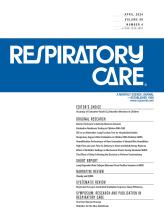This article requires a subscription to view the full text. If you have a subscription you may use the login form below to view the article. Access to this article can also be purchased.
Although the pandemic seems to have receded from our daily lives, the imperative to reflect on its lessons and ready ourselves for future challenges, especially as medical professionals, remains paramount. One such lesson involves the utilization of airborne isolation tools.
During the early stages of the pandemic, significant concerns surrounded airborne transmission and the heightened risk of exposure to contagious aerosols expelled from patients during intubation given its direct contact with the airway and patient secretions.1 Various measures were implemented to protect clinicians while caring for patients with COVID-19,2 including the invention of an intubation box, a transparent plastic enclosure placed over patients during the procedure featuring apertures for clinicians to access the airway.3,4 The intention behind this innovation was to contain patient secretions and large aerosol particles generated by coughing, often induced by intubation, thereby mitigating the risk of transmission to clinicians. Despite receiving an emergency authorization from the FDA, the intubation box encountered challenges in clinical application, including hindering clinicians’ maneuverability during intubation and resulting in higher failure rates and more attempts, even among experienced practitioners.5,6 Consequently, clinicians …
Correspondence: Jie Li PhD RRT RRT-ACCS RRT-NPS FAARC, 600 S Paulina Street, Suite 765, Chicago IL 60612. E-mail: Jie_Li{at}rush.edu
Pay Per Article - You may access this article (from the computer you are currently using) for 1 day for US$30.00
Regain Access - You can regain access to a recent Pay per Article purchase if your access period has not yet expired.







